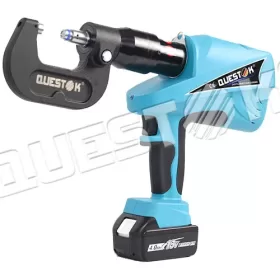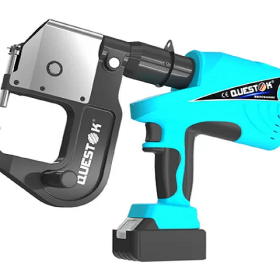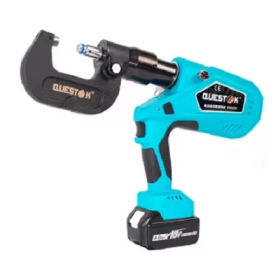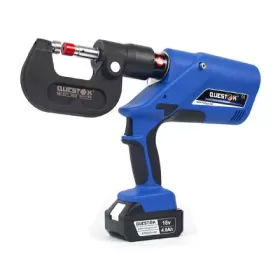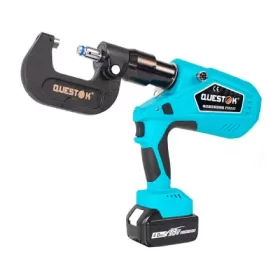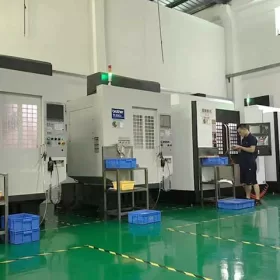The Evolution of Rivet Clinching Tools Over Time
Rivet clinching is a vital joining technique used in various industries, from automotive to aerospace to construction. Over the years, rivet clinching tools have undergone significant evolution, improving efficiency, accuracy, and versatility in joining applications. This article will explore the historical development of rivet clinching tools, tracing their journey from manual tools to advanced automated systems.
Early Manual Tools
The earliest rivet clinching tools were simple hand-held devices that used a hammer or press to drive a rivet through two or more pieces of material. These tools required significant manual labor and could only produce low volumes of joints. As demand for faster and more consistent joining methods grew, the evolution of rivet clinching tools began.
Pneumatic and Hydraulic Tools
The introduction of pneumatic and hydraulic power sources marked a significant advancement in rivet clinching technology. These tools utilized compressed air or hydraulic fluid to power the clinching mechanism, reducing manual effort and increasing productivity. Pneumatic and hydraulic tools also allowed for greater control over the clinching force, improving joint quality and consistency.
Semi-Automated Tools
Semi-automated rivet clinching tools emerged in the mid-20th century, combining the power of pneumatic or hydraulic tools with automated feeding and positioning systems. These tools enabled the preloading of rivets and the precise placement of the clinching head, reducing setup time and improving accuracy. Semi-automated tools also introduced the concept of programmable control, allowing for the customization of clinching parameters and the production of complex joints.
Fully Automated Tools
Fully automated rivet clinching tools represent the pinnacle of rivet clinching technology. These systems are capable of performing all aspects of the clinching process autonomously, from rivet feeding to joint formation. They utilize advanced sensors, software, and robotic systems to achieve unparalleled speed, accuracy, and repeatability. Fully automated tools are widely used in high-volume manufacturing applications where consistent and reliable joining is essential.
Advanced Features and Applications
Modern rivet clinching tools incorporate various advanced features that enhance their capabilities and expand their applications. These features include:
– Robotics integration for precise and flexible joint placement
– Real-time monitoring and control for process optimization
– Advanced diagnostics and preventive maintenance for extended tool life
– Multi-axis movement for clinching joints in complex geometries
– Compatibility with various rivet materials and thicknesses
The Future of Rivet Clinching Tools
The future of rivet clinching tools holds exciting possibilities. With the advent of Industry 4.0 technologies, tools are becoming increasingly connected, intelligent, and adaptive. Advanced algorithms and machine learning will enable tools to self-optimize based on real-time data, ensuring optimal performance and joint quality.
The integration of augmented reality and virtual reality technologies will enhance tool usability, providing operators with intuitive and immersive experiences. Additionally, the development of sustainable rivet clinching tools that utilize environmentally friendly materials and processes will align with the growing demand for greener manufacturing practices.
- Company News
- Industry News
- Tag
- Tags
-
The Advantages of Questok Rivet Guns: Precision, Efficiency, and Durability
In industrial fastening applications, the choice of tools directly impacts productivity, safety, and long-term cost-effectiveness. Questok rivet guns have emerged as a standout solution for professionals across aerospace, automotive, and construction sectors. Combining advanced engineering with user-centric design, these tools deliver unmatched performance. Below are the key advantages that make Questok rivet guns a preferred choice:
-
Rivet Gun FAQ
Rivet Gun FAQ-SPR
-
Fast Assembly and Repair With Cordless Solid Rivet Gun
Questok cordless solid rivet gun stands out as a pivotal innovation, merging portability with power to facilitate efficient and effective fastening in a myriad of applications.
-
Redifine The Role of Self-piercing Riveting Gun Machine
Self-piercing riveting adopts high-speed mechanical fastening skill that joins thin sheet materials, typically steel and aluminum alloys.
-
The Latest Innovations in Clinching Tool Design
Explore the latest innovations in clinching tool design, redefining precision, efficiency, and versatility in material joining.
-
The Application and Maintenance of Self-Piercing Rivet Guns
Delve into the applications of self-piercing rivet guns in the automotive and aerospace industries and reveal the essential maintenance practices that ensure their accuracy and efficiency.
-
Rivetless Riveting Gun for Ventilation Duct Projects
The ventilation duct rivetless gun is a tool for riveting ventilation ducts without rivets.
-
Guide to Using Self-Piercing SPR Riveting Gun
In the automotive industry, self-piercing SPR (Self-Piercing Rivet) riveting guns are commonly used for joining metal components in vehicle bodies, including BMW vehicles.
-
Rivet Gun FAQ
Rivet Gun FAQ-SPR
-
Versatile Fastening- Applications of the Handheld Rivet Gun Across Industries
In the realm of fastening, the handheld rivet gun stands as a testament to ingenuity and versatility. Its ability to effortlessly join materials with sheer strength and permanence has revolutionized manufacturing and construction processes, leaving an enduring mark on diverse industries. Aerospace: Where precision and reliability are paramount, the rivet gun shines. In aircraft assembly, […]
-
Time-Saving Tools- Speeding Up Projects with Electric Blind Rivet Guns
In the whirlwind of project deadlines, every minute counts. But what if there was a tool that could dramatically reduce assembly time, giving you an edge in the race against the clock? Enter the electric blind rivet gun: your secret weapon for lightning-fast and effortless riveting. Electric blind rivet guns are the ultimate time-savers for […]
-
Streamlining Fastening- How an Electric Blind Rivet Gun Enhances Efficiency
Introduction In the realm of manufacturing and assembly, fastening plays a crucial role in securing components and ensuring structural integrity. Traditional manual rivet guns, while reliable, are often time-consuming and labor-intensive. The advent of electric blind rivet guns has revolutionized the fastening process, significantly enhancing efficiency and productivity. This article delves into the benefits of […]
-
Top Trends in Electric Rivetless Clinching Guns
In the realm of fastening technology, electric rivetless clinching guns have emerged as a revolutionary solution for a wide range of industrial applications. These advanced tools offer several преимущества and capabilities, revolutionizing the way businesses approach their fastening needs. Adoption of Brushless Motors Brushless motors have gained significant traction in electric rivetless clinching guns due […]
-
Top Features and Benefits of Universal Self-Piercing Riveting Guns
In the realm of metalworking, precision and efficiency are paramount. Universal self-piercing riveting guns, often referred to as self-pierce riveting guns, embody these qualities, offering remarkable benefits for various applications. These innovative tools feature technologically advanced functions that enhance productivity, reliability, and overall performance, making them indispensable in industries such as aerospace, automotive, construction, and […]
-
The Role of Automation in Electric Rivetless Clinching
Electric rivetless clinching (ERC) is a lightweight joining process that eliminates the need for rivets or other fasteners. This can lead to significant cost savings and increased production efficiency. Automation plays a critical role in ERC, enabling high-speed and high-volume production. Automated Feed Systems Automated feed systems are used to accurately position the two workpieces […]
-
Why Choose a Universal Self-Piercing Riveting Gun for Your Projects?
In the realm of construction and fabrication, riveting guns stand as indispensable tools for creating secure and robust connections. Among the various types available, universal self-piercing riveting (SPR) guns have emerged as a game-changer due to their versatility and efficiency. This article will delve into the compelling reasons why choosing a universal self-piercing riveting gun […]

